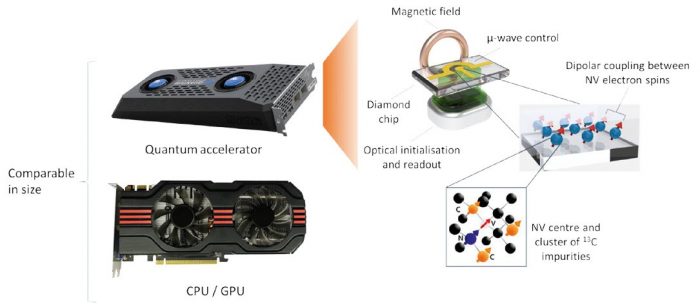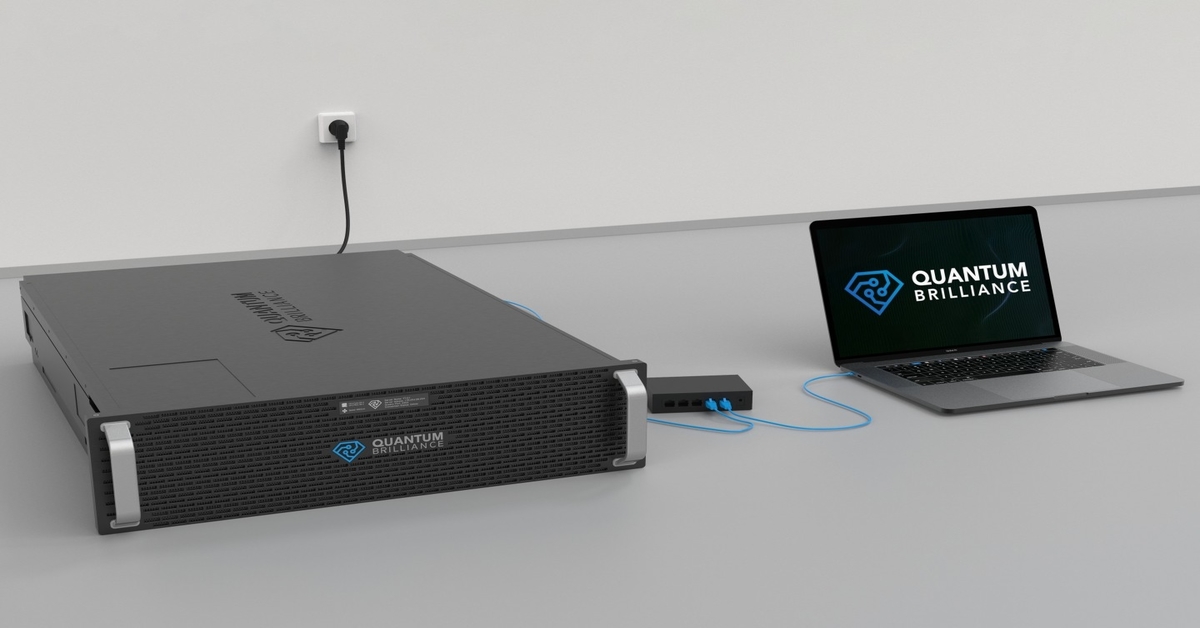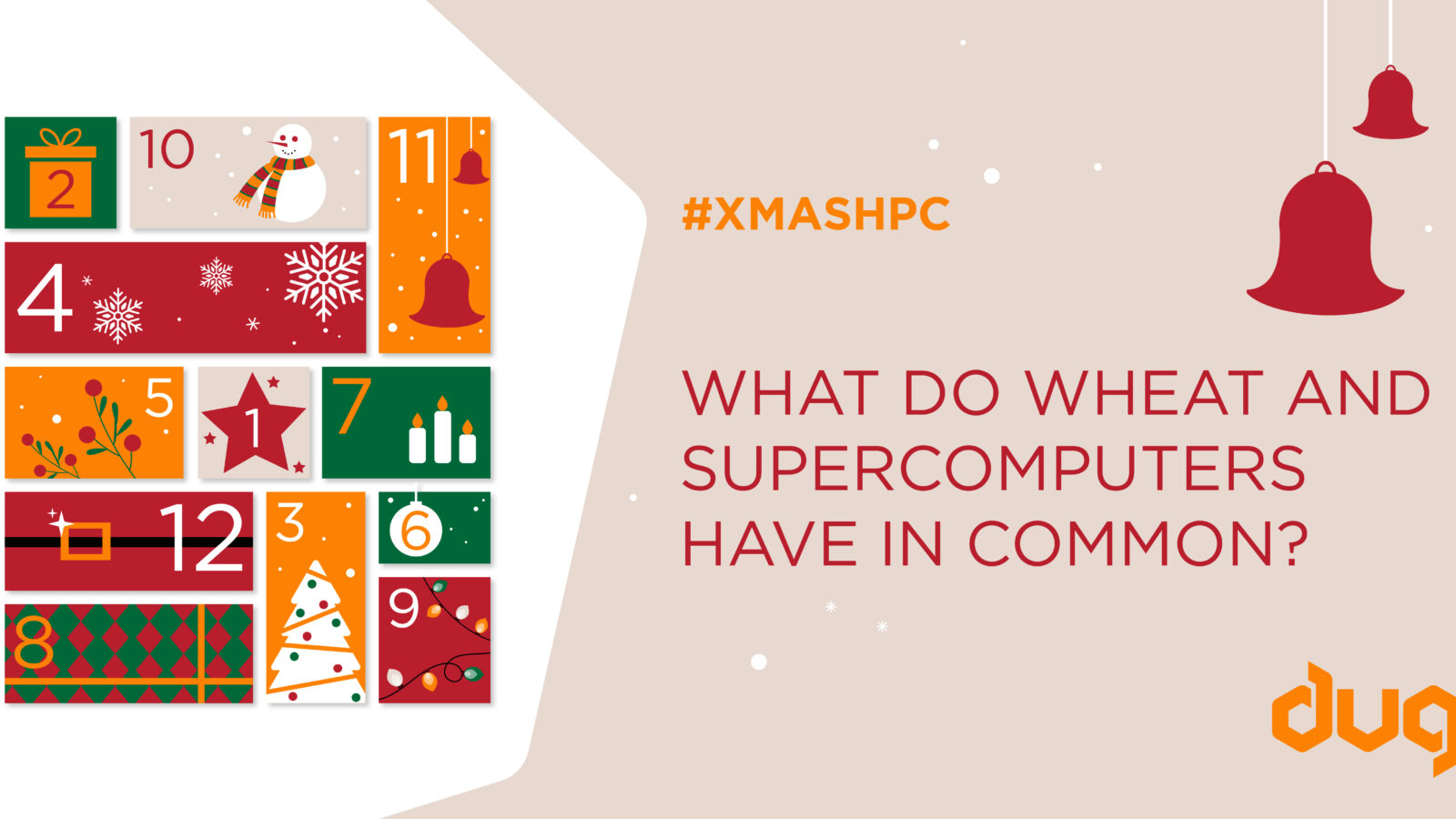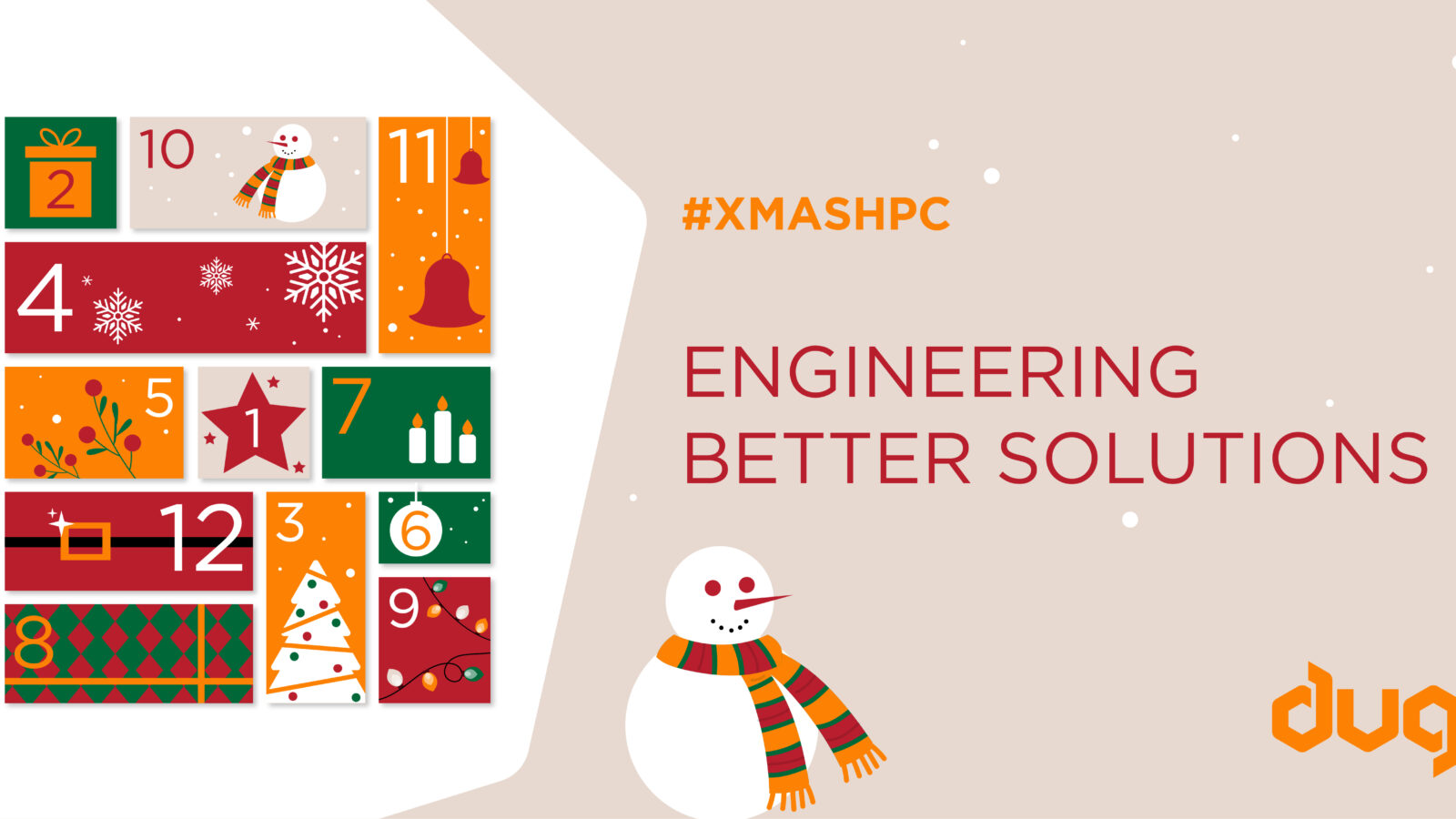If you’ve heard of quantum computers, you might also be familiar with the appearance of one: a huge, magnificent golden chandelier hung from ceiling support, but in place of incandescent light bulbs, there are lots of dangling golden wires.
These superconducting quantum computers require extreme vacuums, exotic mu-metals (alloys with exceptionally high magnetic permeability) and microkelvin-temperature cryogenic cooling to function. Not exactly a recipe for affordable, portable or easily scalable quantum computing power.
But a quantum processor free from all those constraints and small enough to fit in your personal devices, alongside traditional processors, might soon no longer be a pipe dream.
Diamonds are a quantum processor’s best friend.
Quantum Brilliance, an Australian-German startup, developed a quantum microprocessor that operates at room temperature. The size of a graphics card, the processor enables quantum software and calculations to be executed without the need for a fast connection to a server or the cloud. All that can be done on-site, where needed – sounds like a piece of technology that could shake up the realm of quantum computing!
Researchers at Quantum Brilliance use synthetic diamonds to make the processors. In the diamonds, a specific defect is introduced by using a nitrogen atom to replace a carbon atom on each diamond lattice. This creates a gap (or vacancy) next to the lattice, which is negatively charged and acts like a trapped ion. Together, the vacancy and a cluster of nuclear spins form a processor node – the spins act as the qubits of the computer, while the vacancy acts like a quantum bus that shuttles information between qubits.
“Because diamond is such a rigid material, it’s able to hold a lot of quantum properties in place, allowing quantum phenomena to be more stable compared to other systems out there. Given that rigidity, we can actually leverage a lot of pre-existing classical control systems,” said Mark Luo, Co-Founder and COO of Quantum Brilliance.
Diamonds last longer.
For individual qubits to be truly useful in performing real calculations, they need to remain in a superposition state. The amount of time they stay in that state is referred to as the coherence time. Naturally, the longer the coherence time, the greater the ability for the qubit to compute complex problems.
Compared to traditional superconducting quantum computers, such as Google’s Sycamore, the diamond-based qubits perform exceptionally well in terms of their coherency. They’re able to sustain a state of superposition for milliseconds, a thousand times longer than superconducting qubits’ 100 – 150 microseconds. Furthermore, the nitrogen-vacancy qubits are also less error-prone, resulting in calculations with higher accuracy.
Accelerating scientific research.
The brilliance of Quantum Brilliance lies in their ability to effectively produce these quantum devices precisely in a reproducable manner. Minituarising and integrating the control structures needed to get useful information from the qubits were two main areas holding back the practicability of the devices – but Quantum Brilliance managed to go beyond that.

A Quantum Accelerator product planned for 2025 will offer over 50 qubits in a unit the size of a graphics card. Photo credits: Quantum Brilliance
There are already several “Quantum Development Kits”, each with around 5 qubits, placed with customers for benchmarking, integration and co-design opportunities. Quantum brilliance hopes to have a 50-qubit “Quantum Accelerator” by 2025 and a quantum-system-on-a-chip for portable devices in a decade.
Should these devices be commercially available, quantum computing could be harnessed in tandem with traditional computing to carry out a wide range of time-consuming scientific activities that weren’t feasible before. Simulating atoms for better drug development and battery electrodes, green energy generation, optimisation via machine learning, are all research areas that could greatly benefit from a boost in computing power, to name but a few.
From glass to diamonds, we’re excited to see how the day practical quantum computing sparkles. But will it ever surpass or replace traditional supercomputing?




































